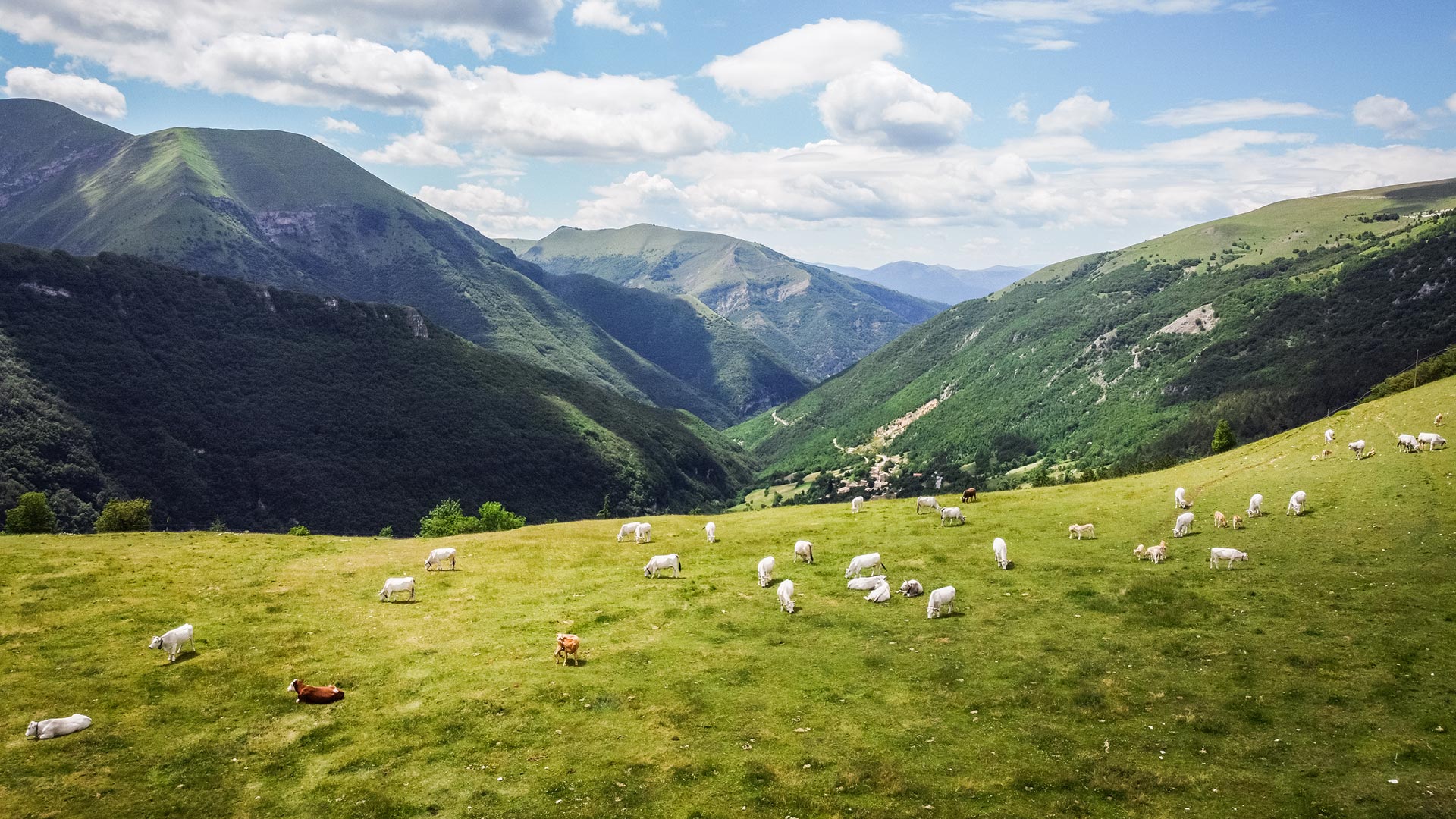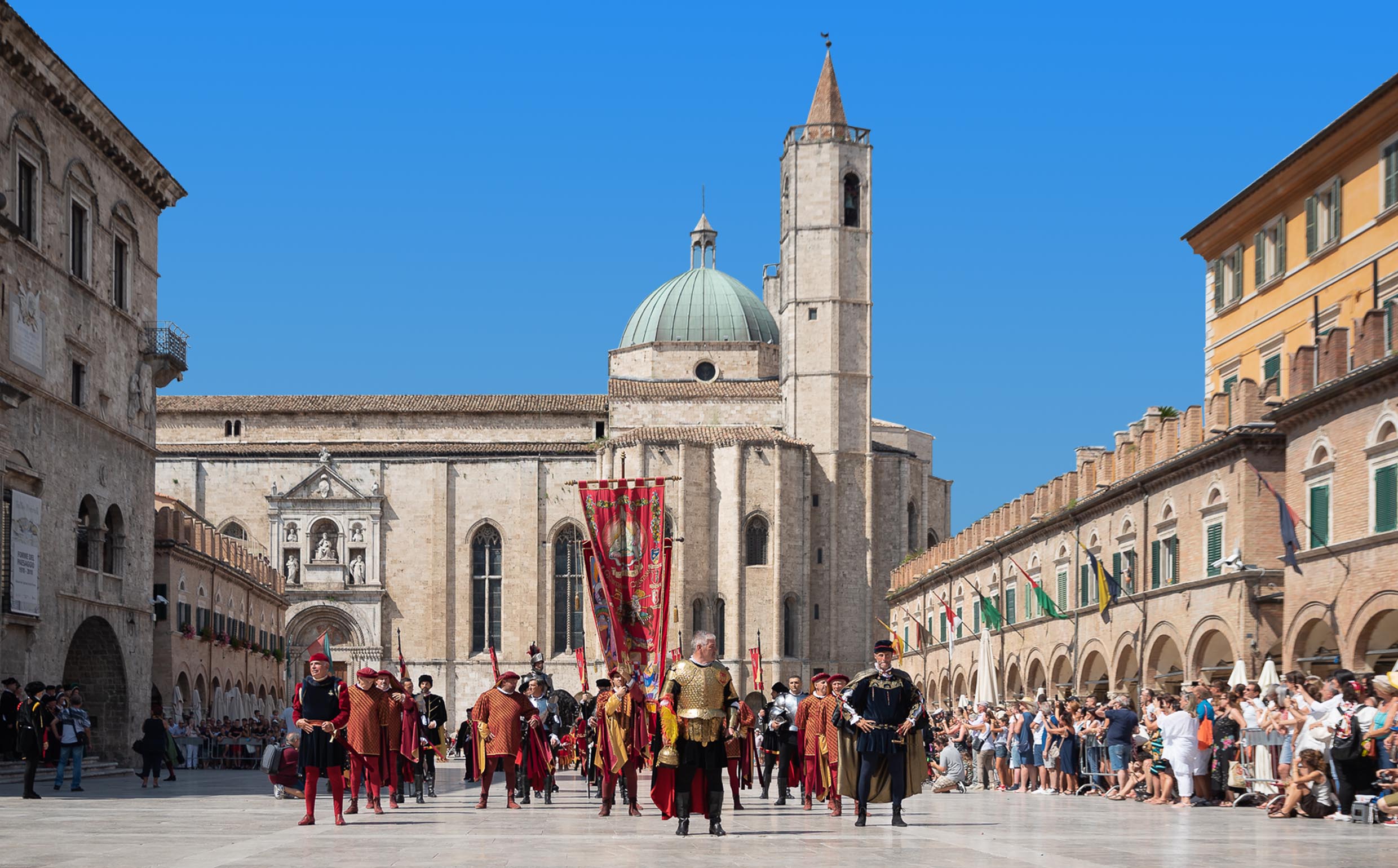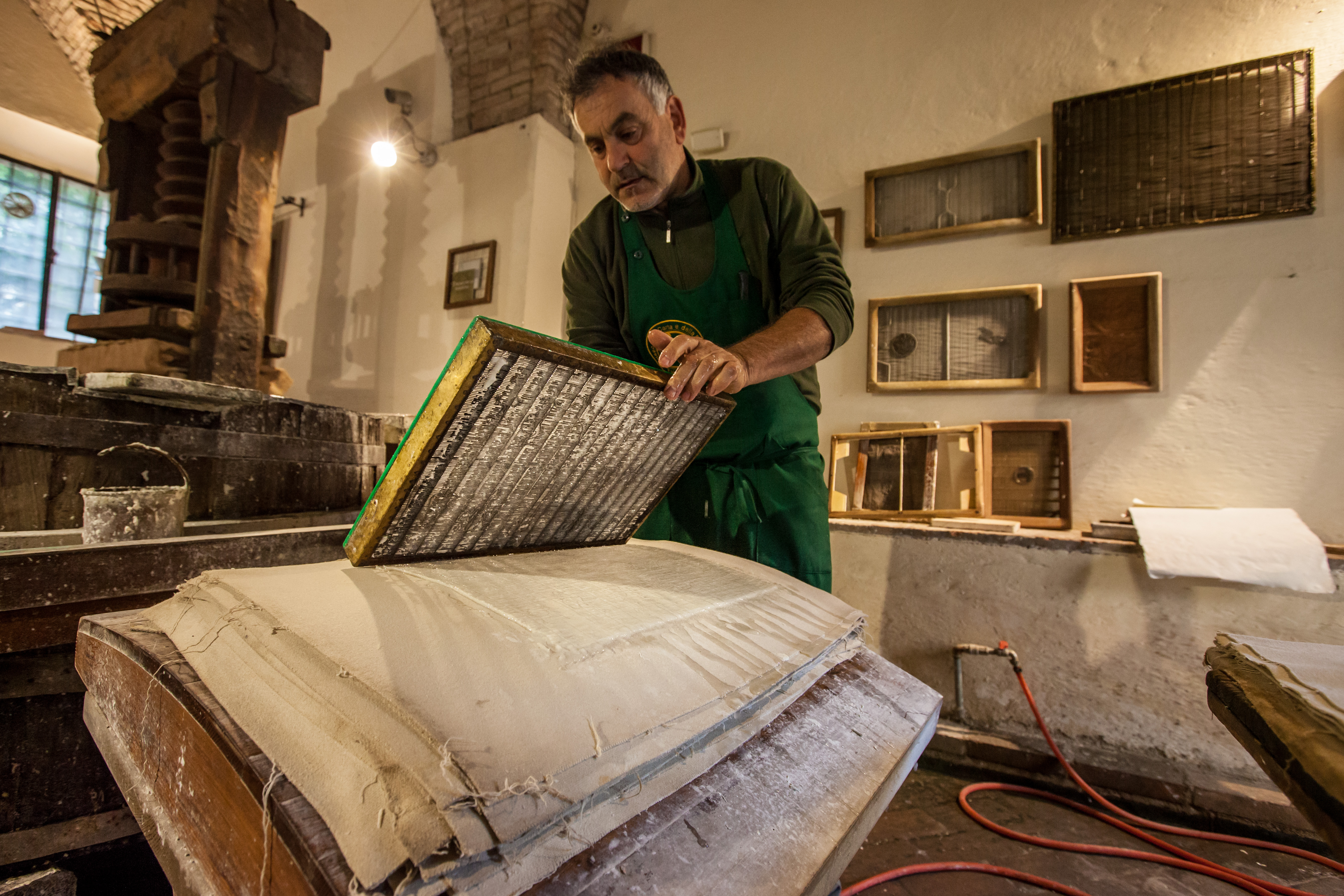In the silence of ancient abbies - Marche Tourism
The cultural heritage
After the fall of the Roman Empire, the Marche was dominated by the Byzantine exarchate north of Ancona and the Longobards of the Duchy of Spoleto to the south; it was then contended by the Empire and the Papal State until the latter gained control of the whole area. The long period of administrative uncertainty and the distance from the papal court in Rome favoured the spread of Benedictine monasticism into the region from Norcia, in Umbria, and Farfa, in Lazio. The monasteries and abbeys were built, above all, along the main Roman roads – the Via Flaminia and the Via Salaria – and the valleys leading from the Adriatic to the Apennines, such as those of the rivers Esino, Potenza, Chienti, and Metauro.
The Benedictines from Norcia built the basilicas of San Michele in Lamoli, in the upper Metauro valley; San Vincenzo al Furlo, on the Via Flaminia; San Firmano in Montelupone, near the mouth of the River Potenza; and Santi Ruffino e Vitale in Amandola, near the River Tenna. The Benedictines from Farfa, on the other hand, settled in the area round Ascoli Piceno, arriving from Lazio along the Via Salaria; the most important of the abbeys they founded was Santa Vittoria in Matenano. The only abbeys belonging to the Burgundian-Cluniac tradition are Santa Maria di Portonovo, at the foot of Monte Conero, near Ancona, and Santa Maria a piè di Chienti in Montecosaro.
In the Marche there are also two splendid examples of Cistercian abbeys in which the transition between the Romanesque and Gothic styles is evident: the abbey of Santa Maria in Castagnola in Chiaravalle, founded by the monks of Clairvaux; and the abbey of Chiaravalle di Fiastra, near Urbisaglia, founded by monks from the abbey of Chiaravalle near Milan. Centrally-planned buildings include San Ciriaco in Ancona, built on a pre-existing Hellenistic temple dedicated to Aphrodite Euploia, and San Giusto di Maroto in Pievebovigliana. There are four churches built on the abbeys with Greek-cross plan of Byzantine derivation, three of which are situated fairly close to each other: Santa Croce dei Conti in Sassoferrato, San Vittore delle Chiuse in Genga, and Santa Maria delle Moje in Maiolati Spontini; the fourth, in the Chienti valley, is San Claudio al Chienti, built on two levels with a façade flanked by two round corner-towers.
-
Pilgrim routes
Growing numbers of travellers and pilgrims are moving about on foot, and a favourite destination of this informed tourism, which learns about places via a slow exploration of the landscape, is known as the Cammini Lauretani, comprising a whole universe of locations, routes, and memories centred around the Marian Sanctuary of Loreto. Today, you can travel a stretch of the Via Lauretana from Assisi to Loreto along a route divided into seven stages; you will pass through delightful and peaceful spots before reaching the Sanctuary dedicated to Our Lady of Loreto, the cornerstone of religion and art in the Marche. Five of these stages involve municipalities in the Marche region: Muccia, Belforte del Chienti, Tolentino, Macerata, Montecassiano, Montelupone, and Loreto. The Cammino Francescano della Marca follows in the footsteps of St Francis, retracing one of his journeys in southern Marche. Along the way, you will encounter wonderful large and small towns, Apennine villages, and places steeped in spirituality such as old convents and splendid Gothic and Romanesque churches.
-
A danteam location: the monastery of Fronte Avellana
It was Saint Romuald, the founder of the Camaldolese order, who, in 1006, constructed the abbey of San Salvatore in Val di Castro, near Fabriano, where he died in 1027, thereby inspiring the monks who built the monastery of Fonte Avellana, on the slopes of Monte Catria. In this secluded place deep in the woods, ideal for meditation – mentioned by Dante in the twenty-first canto of his Paradise – Saint Peter Damian took monastic vows in 1035; he also frequented the church of Santa Maria di Portonovo on the bay of Portonuovo.
-
Franciscan Marche
The Marche was heavily influenced by St Francis of Assisi, and his presence can be traced back to 1208. In 1282, the province of Marca had 85 monasteries. St Francis has marked the cultural and religious history of the Marche.









